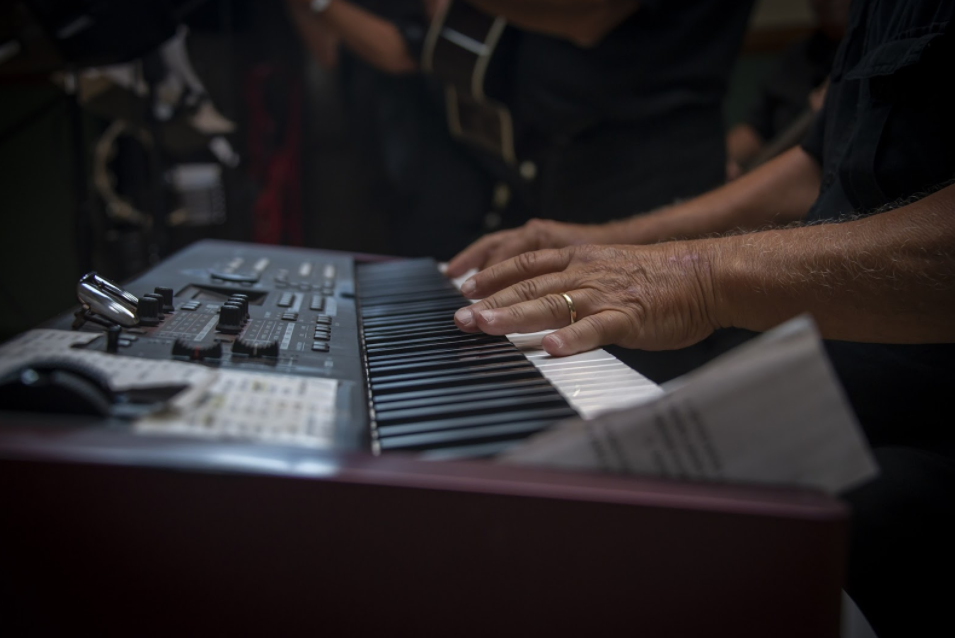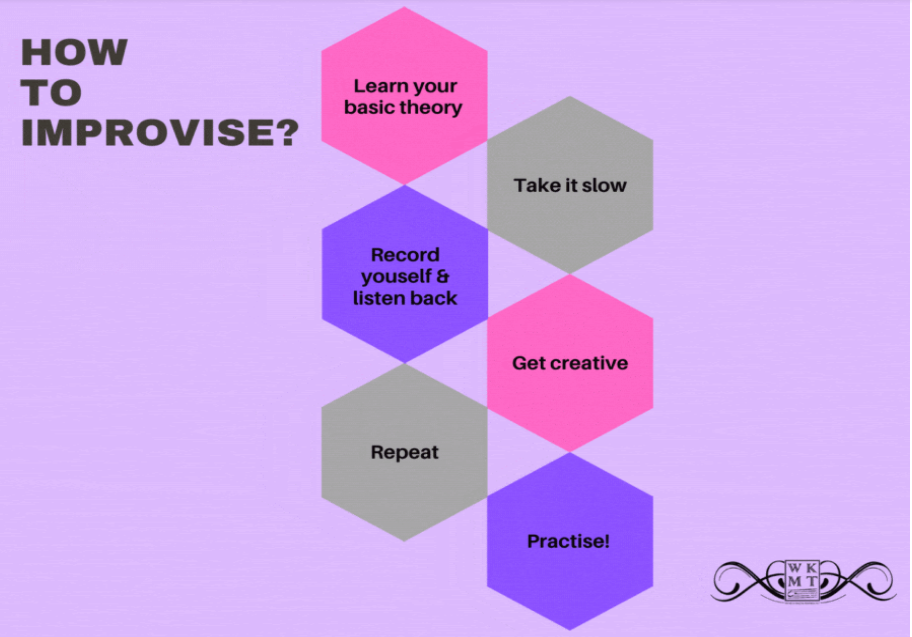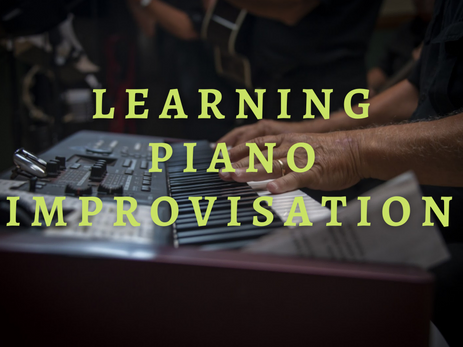Uncategorized
Improvisation: Instant Composition – Learn to Improvise
Improvisation can be pretty daunting; trying to construct something with complete freedom can be some people’s nightmare, however, it doesn’t have to be.

INTRODUCTION
Improvisation, theoretically speaking, is the creative activity of the immediate musical composition.
This uses the ability to combine performance with emotive communication and instrumental technique, all whilst adapting a spontaneous response to other musicians. It can also be a great way for self-expression and even will improve your social skills if you’re with like-minded musicians.
Nowadays, improvisations are commonly best known for jazz musicians, but it is an important skill to learn no matter which musical pathway you take.
Throughout the known musical eras of the Western tradition including Medieval, Renaissance, Baroque, Classical period and Romantic classical music, improvisation was already a valued skill. Many composers such as Mozart, Liszt and Handel were known especially for their improvisational skills, however, it can be said that now, Classical Musicians have lost the art since the 20th century and subsequently focus too heavily on the score.
It can be said that Bach for example was able to improvise fugues because, in the Baroque period, almost any well-trained keyboard player in his day could. It wasn’t a talent, it was just an in-built ability; and it is interesting to sit and wonder if this is true, whether improvisation should be mandatory for musicians to learn immediately, the same way note and time values are.

Within classical music, some forms such as the cadenza in solo concertos contained sections for piano improvisation. This would normally be an extended ornament around one chord (generally the dominant). Keyboard suite preludes, especially those by Bach and Handel, consisted of elaborations of a progression of chords, where performers use it as a basis for their improvisation.
Handel, Scarlatti, and Bach were all known for their traditional use of improvisation in which they improvised on the harpsichord and even the pipe organ.
In the Baroque era, performers improvised ornaments whilst basso continuo keyboard players improvised chord voicings based on figured bass notation. However, in the 20th/21st century, it all changed as performance became institutionalised in symphony orchestras and opera houses and ballets, therefore improvisation began to play a smaller role. Although it has not completely disappeared, some contemporary composers from the 20th and 21st centuries have included improvisation in their creative work.
Cantus Firmus improvisation inspired instrumental music in the late renaissance period.
The improvisations were usually over ostinato basses (relatively short repeated bass patterns) was maintained by organists throughout the centuries. Organists have remained one of the primary instruments when it comes to improvisation, whilst keyboard improvisation has been responsible for compositions of character amongst countless preludes, fantasies and more which were written and performed within the last three centuries.
Improvisations on protestant hymns gave birth to the 17th- and 18th-century chorale prelude. In the 17th and 18th centuries, musicians learned to improvise mainly through oral transmission; for example, they might receive direct instruction from a more experienced musician, or they might imitate other examples heard aurally. In the later 18th century, improvisation was often based on variation techniques but did not exclude the strictly polyphonic procedures of canon and fugue, challenged the ingenuity of virtuoso-composers repeatedly in public improvisational contests.
Jazz improvisation is the spontaneous invention of a melodic line/accompaniment within the jazz music genre.
It is one of the most defining elements of jazz.
Improvisation allows you to create ideas on the spot, and can sometimes include a singer or instrumentalist inventing melodic lines over a chord progression. Although blues, rock, and other genres use improvisation and need to know how to write a melody, it is done over relatively simple chord progressions which often remain in one key (or closely related keys using the circle of fifths).
Whereas jazz improvisation is distinguished by its chordal complexity, often with one or more chord changes per bar, extended chords (e.g a seventh), tritone substitution, unusual chords (e.g., augmented chords) and more. These will typically move through multiple keys within one track. However, since Kind of Blue by Miles Davis, jazz improvisation has come to include modal harmony and improvisation over static key centres, while the emergence of free jazz has led to a variety of types of improvisation, such as “free blowing”, in which soloists improvise freely and ignore the chord changes.
HOW DO WE IMPROVISE?

Learn Your Basic Theory
For your jazz piano improvisation or cadenza to sound musical it needs to be based on the notes of the key you’re playing in. Otherwise, you’ll just produce a jumble of random-sounding notes. To play notes from the key means knowing the scale, and to play in any key means knowing how to play major and minor scales in all 12 keys. It also means knowing the chords of the key, so that you can play suitable notes over a progression in that key. Even if you don’t play chords on your instrument you can benefit from learning about the chords
Take It Slow
When you have good skill on your instrument it is tempting to jump into improvising at your full normal playing speed. However, whenever you’re at the limits of your improvisation skill your brain needs time to actually think through what you’re trying to play!
In future, this need to actively think things through will diminish, and you can play more complex solos while thinking less. But at least at the beginning, you need to be able to accept that your improvisational playing speed will be substantially slower (think 50%) than your regular playing speed.
Record Yourself & Listen back
When you first start improvising, there may not be a specific formula so it can be difficult to remember things you played. When you record your improvisations you will be able to remember and build on your past melodies. Listening to the recording will help you understand and strengthen your weaknesses, as long as you are critical when listening, you should be able to get the full benefit of improvement.
Get Creative
When you are wanting to improvise, a good trick can be to allow the melody to provide a good starting point. You can play a melody and then create your own interpretation, this will give you something to build on without copying the original.
Creativity is the key to improvisation, you can start by trying to change a note or a phrase by adding your own ornamentations, a chord extension and more. You will be pleasantly surprised at the transformation of the melody and how much you can personalise the music with a single adjustment.
Rhythm is extremely important. Becoming rhythmically creative requires a strong foundation so that you are able to make alterations and still sound in time. A great way to practice this is to experiment with rhythm the same way you experimented with notes. You can start by playing the melody and make a shift in the rhythm. This can be done by hitting a note earlier than expected, or a bit later. Listen for the impact this has. Syncopation is a simple but powerful way to add your own flair to a performance.
Repeat
With fewer notes to choose from you are going to be forced to repeat yourself more. Not just with repeated notes, but you’ll find you naturally repeat little phrases and licks more than when using the full scale. This immediately makes your solo sound more musical and less robotic.
You’ll often hear the advice that a great solo creates musical ideas and then plays with and develops them. That can seem like a pretty advanced technique, but when you’re forced to repeat yourself a bit more you will find it actually comes naturally. Instead of trying to play something different every bar, you learn to explore how little you can change each bar and still keep your solo interesting.
Practise
Lastly practise makes perfect!
If you’re finding it hard, don’t give up just keep trying. No one can be perfect on their first attempt, or even every attempt, you may be the best improviser and still mess up in your 100th show. So don’t let any mistakes get you down and put you off, it’s time to go in headstrong and don’t give up.
*Keep on learning with our related posts:
A first approach to jazz piano language

